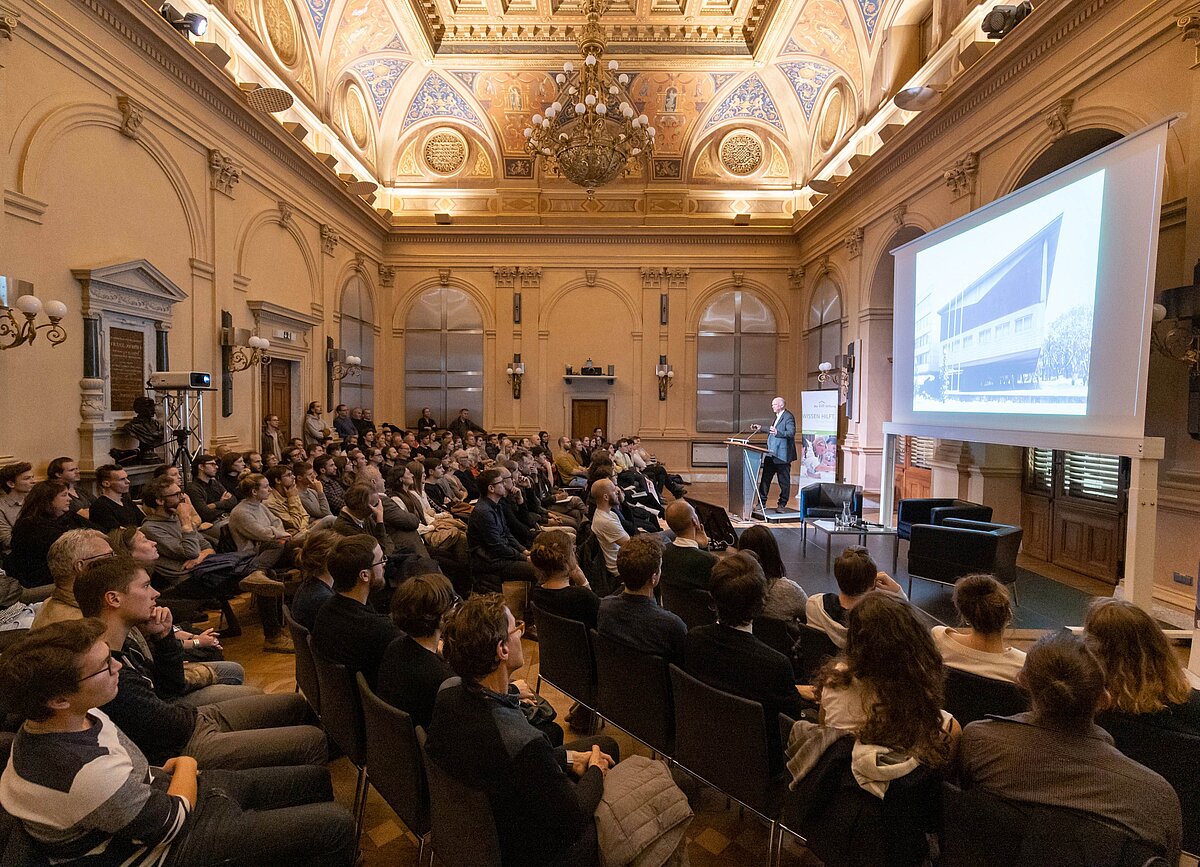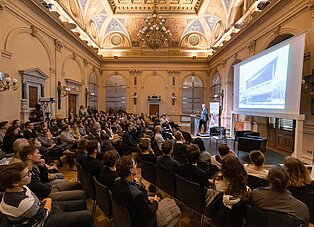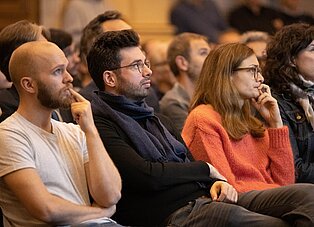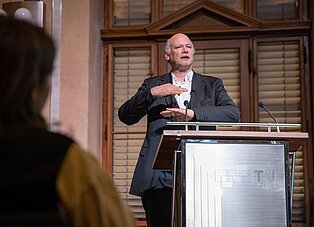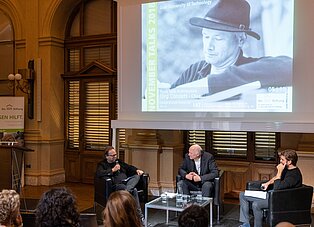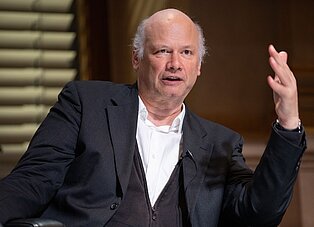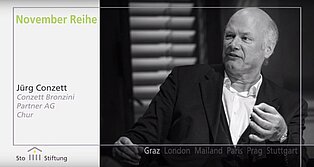Review | Jürg Conzett at the November Talks 2018 in Graz
The ‘Bridge function of architecture’ - between nature, the environment, people and our built-up living space - is a much quoted epithet. With Swiss architect Jürg Conzettt's lecture during the 2018 November Talks, this concept is taken literally. The projects presented on 5 November 2018 in the Main Hall, the ‘Aula’ at TU Graz, meld the construction of supporting structures, architecture and the art of engineering to create works that manifestly illustrate the bridging elements within a building, and the building elements within a bridge.
One element runs like a seamless narrative thread through the vivid lecture by Jürg Conzett from Chur in Switzerland: his handwritten records. Quite often, it is difficult to be sure of what it is that you are looking at. Is this an architectural sketch? Or is it a drawing study? Or, could it be evidence of mathematical proof? For Conzett, a graduate in construction engineering, born in 1956 as the son of a cartographer and painter, it is all of these things at once. He has always been particularly fascinated by supporting structures. Whether a classic bank building built in 1968 in New York or the regional administration office building with its spectacular prominences in Trient, capital of Trentino-South Tyrol, Conzett has to get to the heart of the matter: “With the meticulousness of a detective, I considered how these buildings function”. By no later than that point in his lecture, it was clear that his approach to work is interdisciplinary, migrating between architecture and the planning of supporting structures, and although even his studio website draws a firm distinction between bridge-building and civil engineering, it appears that both forms keep encountering one another in his works. “I would like to combine disciplines”, states Conzett. “Not just aesthetically. I would like to collaborate with other people, with all of us singing from the same hymn sheet”.
Jürg Conzett certainly did not choose the Mursteg over the Mur river simply because of its obvious reference to Styria. Instead, this bridge epitomises his work. His office won the competition in 1993, as one of five entrants, and two years later his wooden construction is linking the town to its railway station. The bridge had to span a width of 47 metres, combined with a height difference of 10 metres, and it had to provide space for pedestrians and cyclists. Instead of cladding the bridge, Conzett took the opposite path. The supporting structure, tensioned by a concealed steel cable, forms the central spine of the bridge. As though through a tunnel, people move along the open side. Thrust panels down either side, secured with dowels like the belts, deliver a dynamic quality - also in a structural sense, something which gave Conzett quite a difficult puzzle to solve. “What am I an engineer for?”, he asked himself, and then calculated the torsional stresses and the displacements. Looking at the finished structure, you cannot see the mathematical problem-solving that it involved. The spruce and larch timber all blend very naturally into their surroundings. The staircases feel like they lead to the balcony of a delightful detached house, and it is true to say that people like to pause on ‘their’ bridge, to enjoy the view of the town and its castle, Schloss Murau. “It is actually fairly uncommon to combine steel and wood”, states Conzett. But “If a thing has something important to say, you can combine the craziest of things”.
The load-bearing interplay between the concealed and the visible is also apparent in the Education and Advisory Centre, the Bildungs- und Beratungszentrum , in Thurgau, Switzerland, – very literally. This building, completed in 2014, houses training rooms for agriculture and home economics, and stands the principle of the concealed supporting structure on its head. With rustic dominance, the load-bearing supports are in the middle of the room, each crowned with a brace. They are rectangular, all made entirely of oak, and are dense, warm and attractive. “We thought this to ourselves: Let us put the supporting structure right in the middle of the corridor, where people can see it, but design it in such a way that you cannot help but like it”. The ceilings in this four-storey building are also made of solid timber. The walls are made of an insulated, panelled stand construction. Steel-reinforced concrete slabs provide the stability required. So in this fine building shell, the supporting structure becomes the frame to present the room - and the room becomes a setting for the supporting structure.
“If the supporting structure is outside and you can actually see it, for me that is something rather lovely”, admits Jürg Conzett, the engineer. With bridges, it is usually the case that the interesting bit takes place away from the gaze of their users - by which I mean under their feet. It is therefore not surprising that this bridge-builder, inspired by a passion for this visitor's centre in the impressive Viamala gorge, proposed building two bridges at once. As you walk across one of them, you can appreciate the visual impact of the other one, framed by its natural surroundings. “At the end of the day, people should be able to grasp what is going on”, comments Conzett with reference - naturally enough - to the supporting structure.
Interview with Jürg Conzett
Watch the video on our YouTube-channel.


